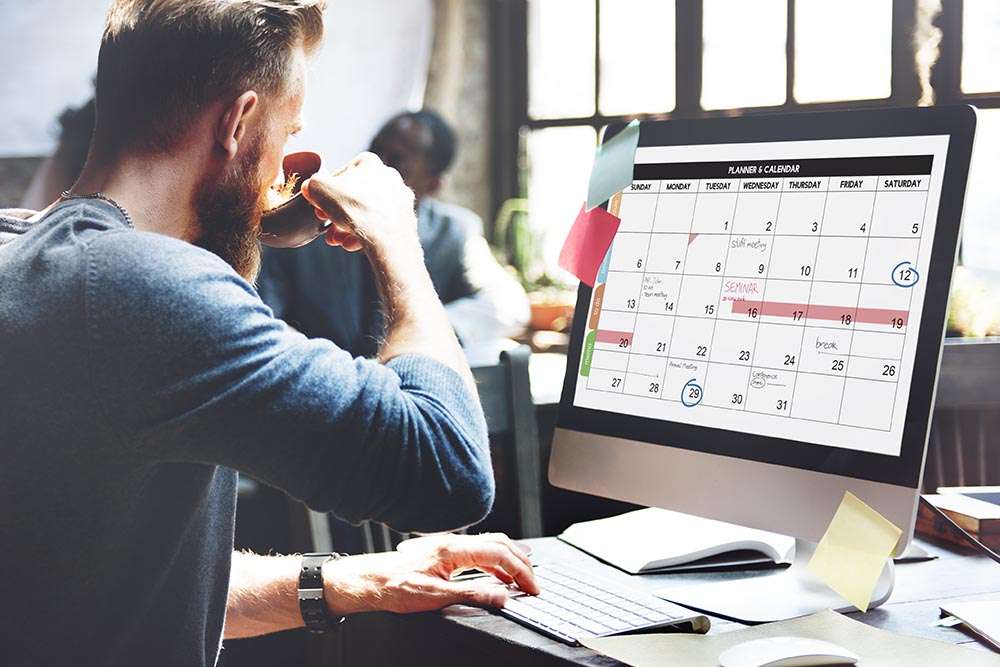
Introduction: The Importance of a Personal Learning Plan for Freelancers
In the ever-changing world of freelancing, staying ahead of the curve is crucial for success. This often requires you to adapt, learn new skills, and grow alongside the evolving demands of the industry. As a freelancer, you might find yourself juggling multiple roles and projects, leaving little time for growth and development. This is where a personal learning plan comes into play.
A personal learning plan (PLP) is a tailored approach to professional development, designed to help freelancers map out their learning goals and create a proactive strategy for achieving them. By crafting a well-rounded PLP, you can build a strong foundation for your freelance career and ensure that you stay competitive within your niche.
For many, the idea of setting aside time for personal development might seem like a luxury that they cannot afford. However, it’s important to understand that it’s an investment in your future. Continuously developing your skillset and expanding your expertise will not only make you more valuable to your clients but also improve the prospects of attracting new ones.
One of the main benefits of creating a PLP is the ability to identify gaps and areas in which you need further improvement. This can be skills that you need to learn to stay relevant or to keep up with the competition. By identifying these gaps, you can ensure that you’re always ahead of the curve and able to offer your clients the best possible service.
Another significant benefit of a PLP is an increased sense of control over your career path. Freelancing often comes with uncertainty and unpredictability in terms of work and income. A well-designed PLP can provide a sense of direction, motivation, and focus, allowing you to make intentional and informed decisions to shape your freelance career the way you envision it.
Moreover, a PLP is an opportunity to reflect on your passion and interests. It encourages you to explore new areas of learning, which can contribute to a more fulfilling career experience. In addition, it forces you to step out of your comfort zone, fostering resilience, and adaptability – invaluable traits for thriving in the ever-changing freelance landscape.
To design an effective PLP, it’s crucial to consider your unique situation, preferences, and goals. The plan should be flexible enough to accommodate the unexpected turns of freelance life, yet consistent in its objective to keep you on track towards professional growth. Successful learning plans often include a combination of learning formats and resources, from online courses and workshops to networking events and mentorship opportunities.
Another vital aspect of implementing a PLP is scheduling time for learning and self-improvement regularly. Just as you would allocate time for your client work, it’s essential to set aside dedicated slots for learning and refining your skills. This will encourage consistency, accountability, and ultimately, ensure that your development does not stagnate.
Finally, don’t forget the importance of monitoring your progress and celebrating your achievements along the way. Like any goal, it’s highly motivating to witness the fruits of your labor, which will keep you inspired to continue learning and investing in your professional growth.
In conclusion, designing a personal learning plan should be a top priority for every freelancer looking to stay ahead of the curve. By taking a proactive approach to personal development, you’ll be better equipped to adapt to the demands of the industry and maintain a competitive edge. Remember that learning is a lifelong process, and continuously updating and refining your PLP will ensure long-term success in your freelance career.

Understanding Your Learning Needs and Goals
As a freelancer, you have the freedom to choose projects and clients that align with your skills, interests, and values. Consequently, staying agile in your profession is essential to maintain a competitive edge. To create a personal learning plan, you need first to identify your learning needs and set clear goals, which will set the stage for a successful and fulfilling freelance career.
Begin by performing a self-assessment to identify your strengths, weaknesses, and areas where you’d like to improve. Take into consideration not only your technical skills but also your soft skills, such as communication abilities, time management, and problem-solving. Be as honest and objective as possible. You may even want to ask for feedback from colleagues, clients, or mentors to get a comprehensive and accurate picture of your current skillset.
Once you have a good understanding of where you stand, reflect on where you want to go in your career. What kind of projects would you like to work on? Do you want to specialize in a specific area, or do you want to become a more versatile freelancer who can take on a wider range of projects? Write down your long-term and short-term career goals. Setting SMART (Specific, Measurable, Achievable, Relevant, Time-bound) goals will help you stay focused and make it easier to determine what you need to learn to achieve those objectives.
Next, identify the gaps in your skills and knowledge that are preventing you from achieving your goals. For instance, if your goal is to transition into a new area of expertise, research what abilities and knowledge are required in that field. If you are looking to expand your current client base, find out which skills are commonly sought out by clients in your industry. Make a list of these areas that you need to focus on as part of your personal learning plan.
After identifying your learning needs, prioritize them according to your goals and the potential return on investment (ROI). Some skills might have a more immediate impact on your ability to secure new clients and projects, while others can be developed over a more extended period. To determine the ROI of each skill or area of knowledge, consider factors like market demand, earning potential, and how acquiring that skill would contribute to achieving your career goals.
It’s important to stay updated on industry trends, as the needs and preferences of clients can change rapidly. Regularly read relevant blogs, articles, and industry reports, and join online forums or social media groups where other freelancers in your field discuss the latest developments. Networking can also help you stay informed about emerging trends and identify new learning opportunities.
Finally, remember that the learning process doesn’t end once you’ve achieved a certain level of proficiency in a specific skill or area of expertise. As a freelancer, you need to adopt a growth mindset and be open to continuous learning and improvement. By actively seeking opportunities to learn, you’ll stay competitive and be better prepared to adapt to the ever-evolving needs of the freelancing market.
In summary, understanding your learning needs and setting clear goals is the foundation of designing a personal learning plan that will help you grow and adapt as a freelancer. Assess your current skillset, define your short-term and long-term objectives, and identify the gaps in your knowledge that you need to address. Prioritize your learning needs based on their potential ROI, and keep an eye on industry trends to stay ahead of the curve. Embrace the continuous learning journey, and you’ll find yourself at the forefront of your field, ready to rise to new challenges.

Choosing the Right Learning Formats and Resources
As a freelancer, you have the freedom to choose from a plethora of learning formats and resources that suit your needs and preferences. By picking the right ones, you will not only ensure a smoother learning experience but also maximize the effectiveness of your personal learning plan. Here’s how you can select the best options for yourself:
1. Consider your learning style: When it comes to learning, one size does not fit all. Some people might prefer visual aids, while others might learn better by listening to an audiobook or working hands-on with the subject matter. Reflect on what works best for you and lean into that. You can make use of videos, podcasts, blog articles, or books that cater to your dominant learning style.
2. Online courses: Online learning platforms are a valuable resource for freelancers who want to acquire new skills or deepen their knowledge in a particular area. With platforms like Coursera, Udemy, or LinkedIn Learning, you have access to a wide variety of high-quality courses taught by industry professionals. It enables you to learn at your own pace, fits your schedule, and may even earn you a valuable certificate upon completion. Choose courses that align with your learning goals and be mindful of your time commitments.
3. Workshops and seminars: Participating in workshops, seminars, or conferences can provide you a unique learning experience. These events offer an opportunity to learn from experts, connect with fellow freelancers, and expand your professional network. Keep an eye out for industry-specific events or general ones that cover topics like business or marketing. In-person events can provide a refreshing break from your work environment, whereas virtual events are more accessible and cost-effective.
4. Tutorials and webinars: If you need to brush up on a specific skill quickly or learn new software, tutorial videos and webinars can be a go-to choice. Many industry experts and software providers offer free webinars and professional video tutorials that can help you get up to speed in a short time. You can easily fit these into your schedule during breaks, or when you have spare time outside of work.
5. Networking and mentorship: Learning from those who have more experience in your field is an invaluable resource. Engage with your network, joining industry-specific online forums, or social media groups to exchange knowledge, tips, and resources. Additionally, finding a mentor who can offer personalized guidance and feedback can accelerate your progress and help you navigate industry challenges.
6. Real-life projects: Nothing beats the learning experience of working on real projects. Proactively volunteer for new tasks in your freelance assignments, or seek relevant side projects that challenge you and expose you to new learning opportunities. This hands-on approach not only builds new skills but also allows you to apply your learning in a practical context, enhancing your overall proficiency.
7. Curate your own resources: Finally, consider building a personal library of learning materials relevant to your goals. Bookmark articles, save videos, and collect other resources that you come across, organizing them in a way that makes it easy to access and review. This not only helps you stay organized but also makes it easy to revisit the material whenever needed.
By considering your learning preferences, your goals, and the types of resources available to you, you can make informed decisions about which formats to incorporate into your personal learning plan. Remember to maintain a healthy balance between different formats, as that can not only keep you engaged but also cater to different aspects of your learning process.

Developing a Realistic and Flexible Schedule
Creating a realistic and flexible schedule is an essential part of designing your personal learning plan as a freelancer. With the constant juggling of work, personal life, and learning, it is important to strike a perfect balance that ensures you accomplish your goals without burnout. Here are some strategies to help you develop a schedule that suits your needs and keeps you on track with your learning objectives.
1. Assess your current schedule: Before designing your learning schedule, take a step back and evaluate how you currently allocate time for work, personal commitments, and other activities. Identify areas where you can incorporate learning, whether it’s carving out dedicated time daily or assigning a specific day(s) of the week to focus on personal development.
2. Set SMART learning goals: As you outline your schedule, ensure that the learning goals you set for yourself are Specific, Measurable, Achievable, Relevant, and Time-bound (SMART). This will help you to focus on realistic goals that align with your personal and professional aspirations. Having clear objectives sets the foundation for a productive learning schedule.
3. Prioritize and break down your goals: To avoid overwhelming yourself, prioritize your learning objectives. Break down your goals into smaller, manageable tasks or steps, and allocate time to each. By focusing on one task at a time, you’ll be able to maintain a steady pace and accomplish your goals more efficiently.
4. Identify peak productivity periods: Determine when you are at your most productive and allocate your learning time accordingly. If you’re a morning person, schedule learning sessions early to capitalize on your energy levels. On the other hand, if you feel more focused in the evening, set aside time after your workday. By doing so, you’ll be more likely to stay consistent with your learning plan.
5. Be flexible: One of the key aspects of developing a realistic schedule is being open to change and maintaining a flexible attitude. As a freelancer, you may need to adjust your plan due to fluctuating workloads or unforeseen personal commitments. Give yourself some leeway within your schedule, such as buffer time for learning sessions, or make use of technology, like mobile apps, to learn on the go when needed.
6. Set boundaries and learn to say “no”: To ensure that your learning plan does not suffer, establish clear boundaries between your work, personal life, and learning time. This may sometimes require saying “no” to new projects or social commitments, especially if they interfere with your learning goals. Communicating these boundaries to those around you will help create an environment conducive to your growth.
7. Schedule regular check-ins: Periodically reviewing your progress is crucial when sustaining a learning schedule. Set aside time every few weeks or monthly to assess your progress toward your goals, adjust your plan if necessary, and celebrate your accomplishments. Regular check-ins not only help you stay on track but also enable you to recalibrate your plan to maintain its effectiveness.
By implementing these strategies, you’ll create a realistic and flexible schedule that caters to your learning needs as a freelancer. Committing to your personal learning plan will enable you to stay ahead of the curve, improve your skills, and ultimately bolster the success of your freelance endeavors.

Monitoring Your Progress and Making Adjustments
As a freelancer, consistently monitoring your progress and making necessary adjustments is crucial to the success of your personal learning plan. It ensures that you stay on track, capitalize on your strengths, and address areas that need improvement. By regularly evaluating your progress, you’ll be better equipped to adapt your plan to meet your evolving learning needs and goals. Here are some steps you can follow to effectively monitor your progress and make adjustments:
1. Set clear milestones: Start by defining specific, measurable, achievable, relevant, and time-bound (SMART) milestones. These can be short-term or long-term, depending on your learning goals. For instance, you may set a milestone to acquire a particular skill within three months or complete a certain number of online courses within six months. Having clear milestones in place will help you determine whether you’re making progress or need to change your approach.
2. Track your progress regularly: Develop a system for tracking your progress toward your milestones. This can be as simple as creating a checklist or as sophisticated as using project management software. Whatever method you choose, make sure it’s accessible and easy to update. Regular tracking not only helps you stay accountable, but also enables you to identify trends and patterns, and to make informed decisions about your learning plan.
3. Reflect on your learning experiences: Reflection is an essential part of the learning process. Reserve some time each week or month to look back on your recent learning experiences and think about what worked well, what didn’t, and any obstacles you faced. It can be helpful to use a journal to record your thoughts and insights. As you reflect, consider the following questions:
* How have I made progress toward my milestones?
* What challenges did I encounter, and how did I overcome them?
* Are there areas in my learning plan that require additional focus or resources?
4. Seek feedback: Whether it’s from your clients, peers, or mentors, obtaining feedback from others can provide valuable insights into your strengths and weaknesses. Constructive feedback can help you not only improve your skills but also adjust your learning plan if needed. Make it a habit to periodically ask for feedback, and be open to receiving it.
5. Adjust your learning plan as necessary: Based on your progress tracking, reflections, and feedback, you may need to modify your learning plan. This could involve adjusting your milestones, allocating more time to specific topics, or finding additional resources. Be prepared to make such changes, as they can significantly impact the effectiveness of your learning plan.
6. Celebrate your achievements: Whenever you reach a milestone or achieve a significant learning goal, take the time to celebrate your accomplishment. Acknowledging your progress not only motivates you but also reinforces a positive attitude towards learning. Consider sharing your achievements with friends, family, or on social media, or simply treat yourself to something you enjoy.
7. Stay committed and resilient: Monitoring your progress and adjusting your learning plan can sometimes be challenging and time-consuming. It’s essential to remain determined and focused on your long-term goals, even during tough times. Embrace a growth mindset and remind yourself that learning is an ongoing, iterative process.
In conclusion, monitoring your progress and making adjustments is an integral part of your personal learning plan as a freelancer. Regularly assessing your performance, reflecting on your experiences, seeking feedback, and adapting your plan will help you stay ahead of the curve and ensure your continuous growth and development. Keep in mind that learning is a journey, not a destination, and that your plan should evolve alongside your goals and experiences.

Balancing Work, Learning, and Personal Life
As a freelancer, effectively managing your time and balancing your work, learning, and personal life is crucial. While it’s essential to prioritize your learning to stay ahead of the curve, neglecting other aspects of your life can hinder your growth and overall well-being. Here are some strategies to maintain a healthy balance.
1. Set clear boundaries between work, learning, and personal time: Establish time frames for when you’ll be working, learning, and enjoying personal activities. Stick to your schedule as much as possible, and avoid mixing these activities. For example, allocate specific blocks of time for work, learning, and leisure, and resist the urge to check work emails during your learning or personal time.
2. Prioritize tasks and activities: Maintain a to-do list for your professional and personal tasks and prioritize them based on their urgency and importance. This will help you manage your time more effectively and ensure that you’re focusing on the most critical activities in each area of your life.
3. Use time management techniques: Time management methods, like the Pomodoro Technique or Eisenhower Matrix, can help you work more efficiently and make better use of your time. By incorporating these techniques, you’ll be able to complete tasks more promptly, create more time for learning and personal life, and minimize procrastination.
4. Learn to say no: Freelancers often take on multiple projects to maintain a steady income, but overcommitting can lead to burnout and decrease your overall productivity. Learn to recognize your limits and say no when you’re already stretched thin. This will help maintain the quality of your work, support your learning goals, and preserve your well-being.
5. Make time for self-care: Regular exercise, good nutrition, and adequate sleep are essential for maintaining a healthy work-life balance. Schedule time for activities that promote self-care, such as meditation, exercise, and hobbies you enjoy. Taking care of yourself will help you stay focused and energized for both your work and learning endeavors.
6. Utilize technology for efficiency: Utilize tools and technology that can help you streamline tasks, stay organized, and manage your time more efficiently. Project management apps, productivity software, and calendar tools can assist you in staying on track with your work and learning goals while freeing up time for personal life.
7. Take breaks and vacations: Taking regular breaks during the day and planning vacations will help you recharge and prevent burnout. Schedule short breaks – even just a 5 to 10-minute walk – throughout the day to reset your focus and energy levels. Plan periodic longer breaks or vacations to give yourself time to relax and rejuvenate fully.
8. Seek support: Share your learning goals with family, friends, and colleagues so they can understand and support your commitment to professional growth. They may encourage you, provide accountability, or even recommend resources that can help you in achieving your goals.
9. Assess and adjust: Regularly review your work, learning, and personal life balance to determine if any adjustments are needed. If you find that you’re struggling to maintain equilibrium in one or more areas, assess your priorities and make the necessary changes.
Maintaining a healthy work, learning, and personal life balance is essential for your overall well-being and long-term success as a freelancer. By implementing these strategies, you’ll be more equipped to manage your time effectively, stay ahead of the curve, and enjoy a more fulfilling life.

Conclusion: Continuously Adapting and Updating Your Plan for Long-term Success
As a freelancer, staying ahead of the curve is critical to your ongoing success in an ever-evolving market. By designing and implementing a personal learning plan, you have taken significant steps toward ensuring your longevity as a sought-after professional. However, the process of learning and adapting to change doesn’t end with the completion of your plan. For long-term success, continuously adapting and updating your strategy is vital.
One key aspect of maintaining your edge is regularly evaluating your progress and the relevance of your learning goals. As the industry landscape shifts and new trends emerge, you may need to revise your plan to accommodate those changes. Keep an eye on developments within your field and be prepared to pivot as necessary. Stay active in industry groups, follow thought leaders and influencers in your area of expertise, and regularly attend webinars and conferences to stay informed about the latest trends and insights.
Another essential component of ongoing success is flexibility. Your learning plan should not be set in stone, but rather be a living document that changes as your circumstances and goals evolve. If you find that a particular learning resource or approach is not as effective as you had hoped, don’t hesitate to make adjustments. Trial and error will play a role in determining what works best for you, and embracing this process will only enhance your capacity for successful, lifelong learning.
Additionally, ensure that you regularly assess your work-life balance. Overextending yourself can result in burnout, which is counterproductive to your long-term aspirations. Prioritizing your well-being and creating a sustainable schedule that incorporates both work and personal responsibilities will go a long way in keeping you engaged and motivated.
Keep track of your achievements, noting the progress you’ve made, the skills you’ve acquired, and the milestones you’ve reached. This will not only provide you with a sense of accomplishment but also serve as a valuable reference when updating your portfolio and CV. Showcase your new skills to potential clients, allowing you to attain more lucrative and exciting job opportunities.
Don’t forget to network and learn from other professionals in your field. Engage with them, share your experiences and challenges, and seek their insights. Collaborative learning can be highly beneficial and may even lead to opportunities for co-working or mentorship relationships. Additionally, as you progress in your career and acquire expertise in certain areas, consider giving back to the community by sharing your knowledge through presentations, workshops, or blog posts.
Lastly, embrace a growth mindset and maintain an open attitude toward learning. Cultivating a love for knowledge and remaining curious about new developments in your field will ensure that you continue to invest in yourself and your professional development. Recognize the intrinsic rewards of learning, beyond its immediate applicability to your work, and cultivate intellectual resilience that will serve you throughout your career.
In conclusion, designing your personal learning plan is just the beginning. Continuously adapting and updating your plan in response to industry developments, evolving goals, and personal circumstances are what will truly set you up for long-term success as a freelancer. Stay dedicated to lifelong learning and maintain a proactive approach to your professional growth, and you will undoubtedly reap the rewards in your thriving career.


